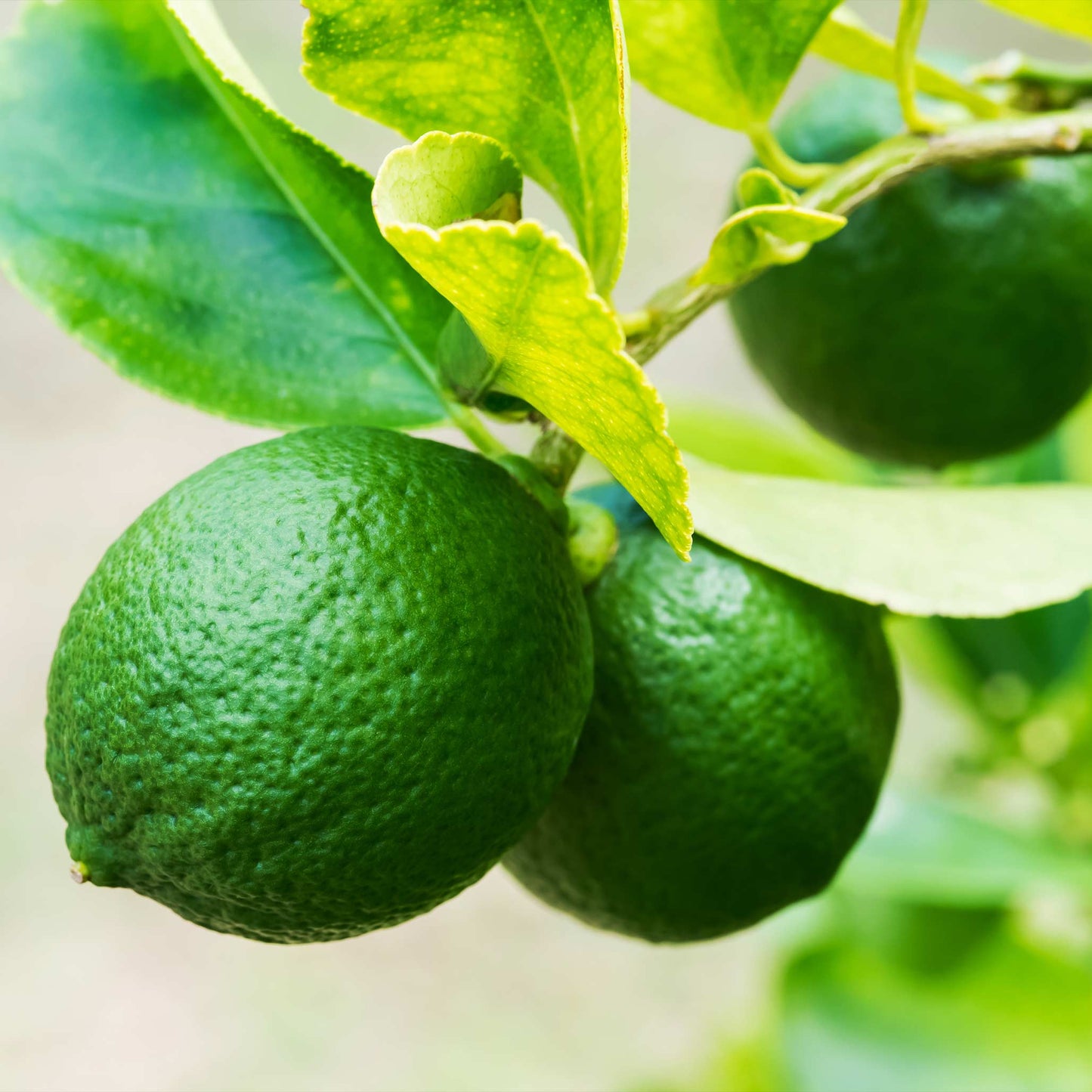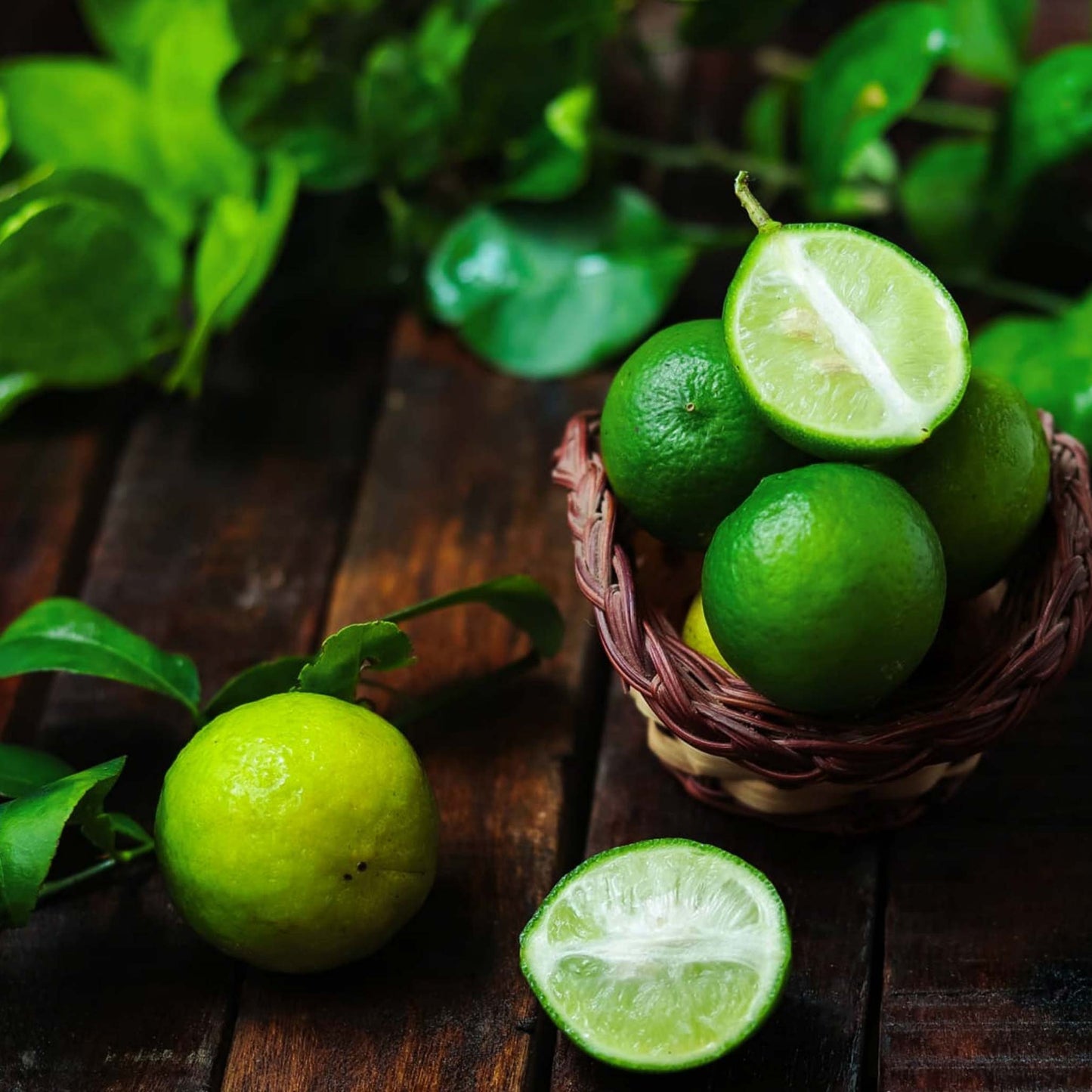Key Lime Bush
Key Lime Bush
SKU:EDB-CIT-KEB-NA-1G
Get Zesty with Your Own Key Lime Bush!
Imagine plucking a fresh, juicy key lime right from your very own bush. With our Key Lime Bush, you can do just that! This compact plant is perfect for patios, sunny kitchen windows, or even your garden bed. It's not just a plant; it's a ticket to homemade limeade and zesty culinary adventures.
Why You'll Love It:
- Easy Peasy Lime Squeezy: Our Key Lime Bush is low-maintenance, making it a breeze to care for. You don't need a green thumb to get these limes to thrive!
- Compact Charm: No sprawling orchard? No problem! This bush fits snugly in smaller spaces, offering lush greenery and fragrant blossoms.
- Year-Round Green: Keep your home feeling fresh and vibrant with evergreen foliage that lasts through the seasons.
Plant Perks:
Not only does the Key Lime Bush add a splash of tropical flair, but it also brings a bundle of benefits:
- Homegrown Goodness: Nothing beats the taste of limes from your own backyard. Plus, you'll know they're grown without any funny business – just pure, citrusy goodness.
- Be a Showoff: Impress your friends and family with your gardening prowess and your delicious key lime pie, all thanks to your bush's bountiful harvest.
- Sweet Scents: The fragrant white flowers are a treat for the senses, making your living space a more pleasant place to be.
How to Get Started:
Ready to add some zest to your life? Click 'Add to Cart' and let the Key Lime Bush bring a slice of paradise to your home. It's a simple choice for a sweeter, more flavorful everyday – one lime at a time.




Product Details
-
Product Category
Edibles
-
Product Subcategory:
Citrus
-
Botanical Name:
Citrus aurantifolia
-
Does Not Ship To:
AL, AZ, CA, FL, GA, LA, OR, TX
-
Mature Height:
6-12 ft.
-
Mature Width:
4-8 ft.
-
Growing Zone:
4-11 patio / 8-11 outdoors
-
Indoor Growing:
Indoors or Patio (non-freezing)
-
Sunlight:
Full-Part Sun
-
Growth Rate:
Moderate
-
Harvest Time:
August and December
-
Bloom Time:
Spring

Planting Directions
<h2>Planting a Key Lime Bush</h2>
<p>To plant a key lime bush, you'll need well-draining soil, a sunny location, and a bit of patience. Here's how to get started:</p>
<ul>
<li>Choose a sunny spot with at least 6-8 hours of direct sunlight.</li>
<li>Ensure the soil is well-draining. If not, amend it with sand or organic matter.</li>
<li>Dig a hole twice as wide and the same depth as the root ball.</li>
<li>Remove the bush from the nursery pot and gently tease out the roots if they are pot-bound.</li>
<li>Place the bush in the hole, making sure the top of the root ball is level with the soil surface.</li>
<li>Backfill the hole with soil, tamping down gently to remove air pockets.</li>
<li>Water thoroughly after planting to settle the soil.</li>
<li>Mulch around the base to retain moisture and regulate soil temperature.</li>
</ul>
<h2>Care and Maintenance</h2>
<p>Once your key lime bush is planted, follow these steps for care:</p>
<ul>
<li>Water regularly to keep the soil consistently moist, but not waterlogged.</li>
<li>Apply a citrus-specific fertilizer according to package instructions, usually every few months during the growing season.</li>
<li>Prune to shape and remove any dead or diseased branches in the late winter or early spring.</li>
<li>Protect the bush from frost by covering it or bringing it indoors if potted.</li>
</ul>
<h2>Pollination and Harvesting</h2>
<p>Key lime bushes are self-fertile, so they don't require another plant for pollination. However, attracting bees can help improve fruit set:</p>
<ul>
<li>Encourage bees by planting pollinator-friendly flowers nearby.</li>
<li>Hand pollination can be done by gently brushing a small paintbrush inside the flowers to transfer pollen.</li>
<li>Harvest limes when they are green to light yellow and give slightly to pressure.</li>
</ul>
<p>Remember, gardening is a learning process. Observe your plant's response and adjust care as needed. Happy gardening!</p>

FAQs
<h2>FAQs for the a Key Lime Bush</h2>
<ol>
<li>
<strong>How do I plant a Key Lime Bush?</strong>
<p>Planting a Key Lime Bush involves several steps to ensure its healthy growth:</p>
<ul>
<li>Choose a sunny location with well-draining soil.</li>
<li>Amend the soil with compost or well-rotted manure to improve fertility.</li>
<li>Dig a hole twice as wide and the same depth as the root ball of your plant.</li>
<li>Remove the plant from its container and gently tease out the roots if they are pot-bound.</li>
<li>Place the plant in the hole, ensuring it's at the same depth it was in the container.</li>
<li>Backfill the hole, gently firming the soil around the plant to remove air pockets.</li>
<li>Water thoroughly after planting to settle the soil around the roots.</li>
<li>Mulch around the base to retain moisture and suppress weeds, keeping the mulch away from the trunk.</li>
</ul>
</li>
<li>
<strong>How often should I water my Key Lime Bush?</strong>
<p>Watering frequency depends on the weather and soil type, but here are general guidelines:</p>
<ul>
<li>Water newly planted bushes 2-3 times a week to help establish roots.</li>
<li>Once established, water deeply once a week, allowing the soil to dry out slightly between waterings.</li>
<li>In hot, dry periods, you may need to water more frequently.</li>
<li>Use a soaker hose or drip irrigation to deliver water directly to the roots and minimize leaf wetness, which can lead to disease.</li>
</ul>
</li>
<li>
<strong>What is the best fertilizer for a Key Lime Bush?</strong>
<p>Fertilization is crucial for the health and productivity of your Key Lime Bush:</p>
<ul>
<li>Use a balanced, slow-release citrus fertilizer with micronutrients, especially iron, zinc, and manganese.</li>
<li>Apply fertilizer in early spring, mid-summer, and late summer, following the label's recommended rates.</li>
<li>Avoid over-fertilizing, which can lead to excessive foliage growth at the expense of fruit production.</li>
<li>Incorporate organic matter, like compost, into the soil annually to improve fertility and soil structure.</li>
</ul>
</li>
<li>
<strong>How do I ensure pollination of my Key Lime Bush?</strong>
<p>Key Lime Bushes are self-fertile, but here are tips to ensure good pollination:</p>
<ul>
<li>Plant in a sunny location as flowers need sunlight to produce nectar, attracting pollinators.</li>
<li>Encourage beneficial insects by planting a variety of flowers nearby to attract bees and other pollinators.</li>
<li>If you have low bee activity, gently brush a small paintbrush across the flowers to transfer pollen from one flower to another.</li>
<li>Avoid using pesticides that can harm bees and other beneficial insects.</li>
</ul>
</li>
<li>
<strong>When and how do I harvest Key Limes?</strong>
<p>Harvesting at the right time is crucial for the best flavor:</p>
<ul>
<li>Key Limes are typically ready for harvest in late summer to early fall.</li>
<li>Look for fruits that are light green to yellow, indicating ripeness.</li>
<li>Gently twist the lime off the branch or use pruning shears to cut it free, being careful not to damage the plant.</li>
<li>Key Limes can be stored in the refrigerator for up to two weeks.</li>
</ul>
</li>
</ol>





